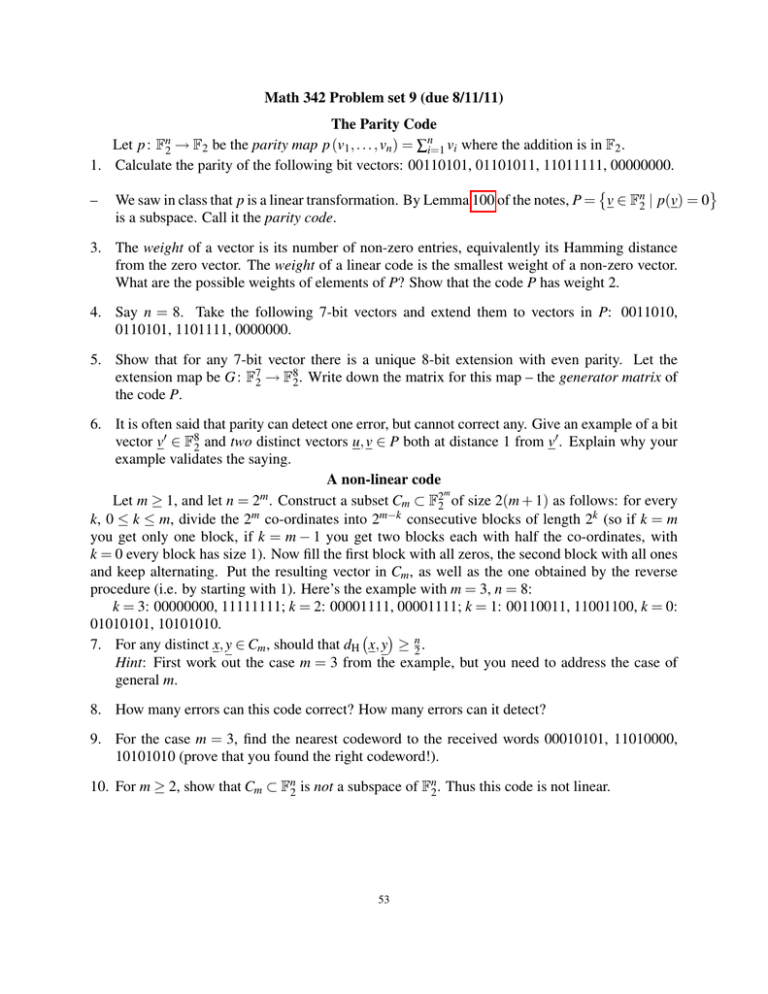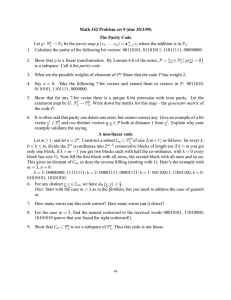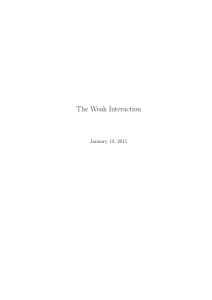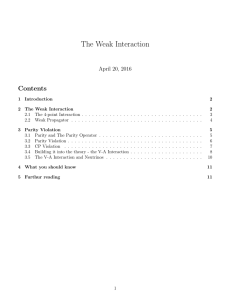Math 342 Problem set 9 (due 8/11/11) The Parity Code → F
advertisement

Math 342 Problem set 9 (due 8/11/11) The Parity Code Let p : → F2 be the parity map p (v1 , . . . , vn ) = ∑ni=1 vi where the addition is in F2 . 1. Calculate the parity of the following bit vectors: 00110101, 01101011, 11011111, 00000000. Fn2 – We saw in class that p is a linear transformation. By Lemma 100 of the notes, P = v ∈ Fn2 | p(v) = 0 is a subspace. Call it the parity code. 3. The weight of a vector is its number of non-zero entries, equivalently its Hamming distance from the zero vector. The weight of a linear code is the smallest weight of a non-zero vector. What are the possible weights of elements of P? Show that the code P has weight 2. 4. Say n = 8. Take the following 7-bit vectors and extend them to vectors in P: 0011010, 0110101, 1101111, 0000000. 5. Show that for any 7-bit vector there is a unique 8-bit extension with even parity. Let the extension map be G : F72 → F82 . Write down the matrix for this map – the generator matrix of the code P. 6. It is often said that parity can detect one error, but cannot correct any. Give an example of a bit vector v0 ∈ F82 and two distinct vectors u, v ∈ P both at distance 1 from v0 . Explain why your example validates the saying. A non-linear code m m Let m ≥ 1, and let n = 2 . Construct a subset Cm ⊂ F22 of size 2(m + 1) as follows: for every k, 0 ≤ k ≤ m, divide the 2m co-ordinates into 2m−k consecutive blocks of length 2k (so if k = m you get only one block, if k = m − 1 you get two blocks each with half the co-ordinates, with k = 0 every block has size 1). Now fill the first block with all zeros, the second block with all ones and keep alternating. Put the resulting vector in Cm , as well as the one obtained by the reverse procedure (i.e. by starting with 1). Here’s the example with m = 3, n = 8: k = 3: 00000000, 11111111; k = 2: 00001111, 00001111; k = 1: 00110011, 11001100, k = 0: 01010101, 10101010. 7. For any distinct x, y ∈ Cm , should that dH x, y ≥ 2n . Hint: First work out the case m = 3 from the example, but you need to address the case of general m. 8. How many errors can this code correct? How many errors can it detect? 9. For the case m = 3, find the nearest codeword to the received words 00010101, 11010000, 10101010 (prove that you found the right codeword!). 10. For m ≥ 2, show that Cm ⊂ Fn2 is not a subspace of Fn2 . Thus this code is not linear. 53



